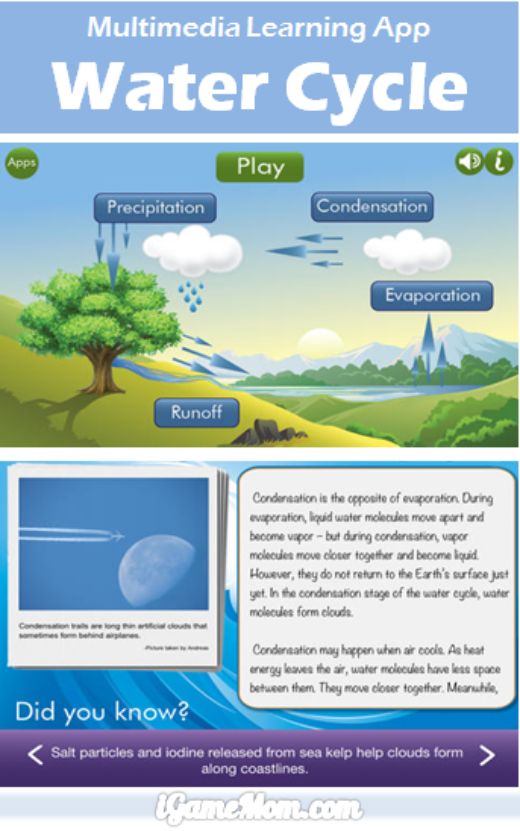We have put together series of science experiments you can do at home. Today we continue our science experiments ideas with water science experiments for kids. There are many science concepts you can learn from water: the 3 status of water, the hardness of water, forces from water, surface tension of water. As usual, all science experiments we choose are easy to do at home. Enjoy!

Fascinating Water Science Experiments for Kids to Do at Home
Bending Water: this is a fun experiment to watch the power of static electricity. All you need are water faucet with running water, latex balloon, and a nylon comb. After rubbing the balloon against the nylon comb to create a static charge on the comb, slowly and carefully place the teeth of the comb next to the stream of water. Watch what happens to the water.
Change boiling point of water: add about 50ml water to a container that is safe to boil water in, take the boiling temperature. Do another with the same amount of water and add 15gm sugar into the water, and measure the boiling temperature. Are the two temperature the same?
Test water PH: take water from several different sources: tap water, rain, swimming pool, river or lake water. Use pH strip to test out water pH level. Can you explain the differences?
Refraction in water: place a small piece of colored paper on table, then a clear glass filled with water on top of the paper, then a plate on top of the glass. Now try to find the piece of colored paper. You won’t be able to see it, no matter which angle you are looking from. This is because the bending of light rays when they pass at an angle from one medium to another. Light rays falling on the paper get refracted and bend upward as they pass from water to air. Since the plate blocked their ways to come through, the colored paper can’t be seen from any angle. It is vanished. The video below shows you how to do it.
Surface tension of water: have a small cup filled with water to full, and add small objects like paper clips into the cup and count how many paper clips does it take for the water actually spill out.
Water power: make a water wheel, and make it moving with water. What do you have to do to make the water wheel turning faster?
Hardness of water: add two cups of water to each of the two soda bottles, the add two teaspoons of Epsom salt to one of the bottles. Close the cap onto the bottle and shake to help the Epsom salt to dissolve. Now add a few drops of dishwashing detergent to each bottle, and close the bottle caps. Shake both bottle vigorously for a few seconds. You will see one bottle has a lot more bubbles. Which one? Why? Because adding Epsom salt makes the water “hard”, and hard water is difficult to lather. That is way it is hard to clean your clothes in hard water.
Looking for more water related learning materials? Check out this wonderful app about water cycle. For more science activities to do at home, try 150+ Kitchen STEM Activities







